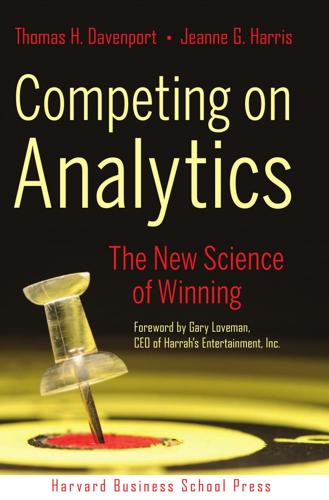
Competing on Analytics: The New Science of Winning
by
Thomas H. Davenport
and
Jeanne G. Harris
Published 6 Mar 2007
Both airlines (American a bit more than United) were pioneers in adopting such analytical approaches as yield management for seat pricing, optimization of routes and resource scheduling, and the analysis of loyalty program data. While we believe that these companies would be worse off without their use of analytics, neither has fared particularly well. United has spent most of the last decade in bankruptcy, and American has barely stayed out of it. What happened? Two things have kept these firms from succeeding with their analytical strategies. One is that their analytics support an obsolete business model. They pioneered analytics for yield management, but other airlines with lower costs can still offer lower prices (on average, if not for a particular seat).
…
According to Shigeru Komatsu, the company’s Chief Knowledge Officer (it is rare for analytics be addressed in such a role, but they are at Toshiba Semiconductor), “We have worked on standardizing performance indicators, we have built shared databases, we have made efforts to share analysis cases and results, and we have implemented analytic software such as Minitab and Spotfire DecisionSite in order to increase our efficiency in analytics.”13 One key issue with analytics in manufacturing is how well production workers can actually use sophisticated analytical tools, but Toshiba has found that visual analytics help to address this problem. “We observed that only 20 percent of the possible users of yield management software, for example, actually use it effectively. This is not only because the complicated special features make it hard to use for many engineers, but also because it only has a part of the data we need to analyze,” said Koji Kimura, the yield manager at Toshiba’s bipolar fab in Kitakyushu.14 Using the visual approach, Toshiba has been able to take an integrated approach to analytics in its business. The company combines analytics with a highly disciplined approach to quality and both operational and managerial innovation.
…
In short, opportunities abound to employ simple analytic methods to marginally or substantially increase profitability, especially in large businesses such as mine where a single insight can ring the cash register literally thousands or millions of times. Examples abound in casino resort entertainment, including yield management, game pricing, customer relationship management, loyalty programs, and procurement. To take perhaps the easiest and biggest opportunity in my tenure, we found that a ten-basis-point movement of slot pricing toward the estimated demand curve for a given game could enhance our profitability by an eight-figure amount and be unobservable to the guest.
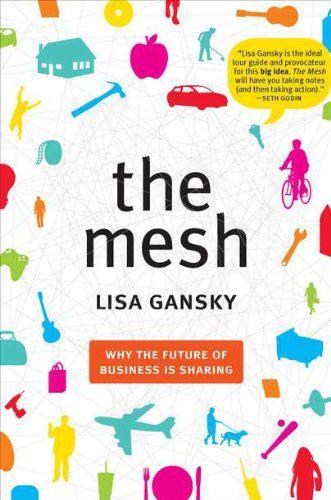
The Mesh: Why the Future of Business Is Sharing
by
Lisa Gansky
Published 14 Oct 2010
In business, there’s a technical term for the efficient employment of physical assets—yield management. Each flight of an airplane, for instance, requires a certain financial outlay, regardless of how many passengers it carries. The pilot, stewards, and maintenance personnel must be paid whether there are 7 passengers or 270. The fuel cost and wear and tear on the airplane are the same. Once the plane takes off with seven passengers, it’s gone, and so too are its costs and profits. Airlines have used various methods to increase the number of passengers on each flight (unfortunately including overbooking). Mesh businesses can maintain superior yield management. The density of consumer information they receive enables them to manage resources (and waste) efficiently, regularly, and well.
…
We will recycle it and give you 20 percent off your next purchase. The retailer builds loyalty and takes a baby step toward repositioning itself as a service-oriented business. Like businesses, individuals can also achieve better personal yield management through the Mesh. WhipCar and CouchSurfing allow an individual to get more use for only marginally greater cost from his car and, well, couch. This personal yield management relies on information and information tools available to the individual through association with a Mesh business—yet another advantage of access over ownership. custom design for all. Further, in the future, customers can help determine how their Mesh ecosystem is put together.
…
See Loans/social lending Social networking importance to the Mesh Mesh companies negative events, broadcasting on on Netflix network effect privacy, importance of and product improvement for word-of-mouth advertising See also Facebook Software getting for startup Mesh open development Software as a service (SaaS) Sourcemap SpareFoot Spride Share Standardization of products Starting a Mesh company capital needs customers, identifying define/redefine/scale stages first mover advantage marketing primary questions serendipity as factor shareable assets, identifying software, ASP model Stohr, Kate Supply chain forward and reverse integration reverse supply chain Sustainable design Swishing Taxi Magic TCHO Technology, Mesh-friendly Mesh companies TED Prize thinkspace thredUP adaptability of case study Tool sharing, Mesh companies Toyota, broken trust Transaction fees Transparency and adaptability “age of radical transparency,” and trust building Transportation efficiency communities developed for See also Bike sharing; Car sharing Travel-related services, Mesh companies Trials Tripkick Trust building basics of broken trust, examples of and customer complaints customer misbehavior, dealing with by delighting customers discoverers as trust agents lost trust, rebuilding maintaining trust negative events, impact on and privacy practices proprietary versus open control reviews, keeping perspective social networks, role of starting slow, necessity of and transparency trials/samples for “virtuous circle of trust,” Tryvertising Twitter Tylenol tragedy Upcycling Mesh companies Vacation Rentals by Owner (VRBO) Virgin Corporation, Mesh strategy Volkswagen, idea solicitation on Web Walmart customer data, use of greening of integration with suppliers Mesh possibilities for waste, created by Waste disposal and climate change as resource underutilization Waste management government initiatives for Mesh companies in Mesh ecosystem in natural ecosystem raw materials, sharing recycling and reuse services reverse value chain yield management See also Recycling and reuse services Water Legacy Wattzon.com Westmill Wind Farm Co-operative WhipCar Wilcox, Ronald Wilhelm, Eric Williamson, Oliver Wine cooperatives, Mesh companies Word of mouth, power of Work-space sharing, Mesh companies World of Goods Yelp Yield management Zipcar customer experience with Mesh model for partners Zopa Zynga Table of Contents Title Page Copyright Page Dedication Introduction Chapter 1 - Getting to Know the Mesh Chapter 2 - The Mesh Advantage Chapter 3 - Mesh Design Chapter 4 - In with the Mesh Chapter 5 - In Mesh We Trust Chapter 6 - The Mesh as Ecosystem Chapter 7 - Open to the Mesh Chapter 8 - Mesh Inc.

Hard Landing
by
Thomas Petzinger
and
Thomas Petzinger Jr.
Published 1 Jan 1995
Crandall wanted his staff to monitor the rate of actual bookings in various fare categories, compare them to the predicted rate, and then adjust the inventory of variously priced seats accordingly. To this tedious yet tremendously meaningful process Bob Crandall gave the leaden name of “yield management.” Responsibility for yield management was assigned to Barbara R. Amster, who had become one of the few women to attain a senior position in the boys’ club of commercial aviation. She did so on pure genius, and a comfort level with computers born of having started out in the New York office as a telephone reservationist on the early Sabre machines.
…
This wasn’t just the odd route here or there to compete with Braniff or New York Air or People Express. This was almost everything. Crazy Eddic pricing had reached the major airlines. Every seat must go! American had out-People Expressed People Express. Because he had no computer systems and no yield management, Don Burr would have to offer every seat on any given flight at the price Bob Crandall was offering on a fraction of his. Crandall was only too happy to let Burr sell a cheap seat to anyone that American had turned away for the sake of a passenger paying the full fare. Within minutes of American’s announcement, all airline stocks plunged; investors braced themselves for the bloodiest fare war ever.
…
As something sold cheaply, flying was no longer something most people felt the slightest compulsion to dress up for or otherwise regard with marvel. Where families of the 1950s and 1960s had scheduled excursions to the airport observation deck to watch the planes, they could now simply schedule reservations and fly on the planes. The magic of “yield management” alone far from accounted for the widespread accessibility of air travel. For one, the ultralow fares were increasingly subsidized by much steeper fares charged of business travelers. For the airlines the net effect was salutary. While discount fares were plunging rapidly, the average of all fares was declining only slightly to 11 cents a mile in 1986, from 12 cents a mile two years earlier.
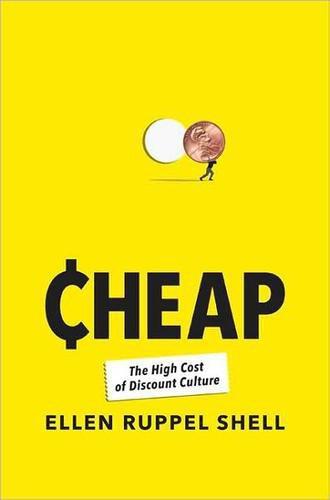
Cheap: The High Cost of Discount Culture
by
Ellen Ruppel Shell
Published 2 Jul 2009
Mathematically-based price optimization is not new. Airlines and hotels have relied on it for decades. When a flight starts to fill or a hotel runs short of rooms, yield management ensures that prices go up. Likewise, when rooms or seats aren’t filling fast enough, prices go down. This phenomenon is not reliably linear; many of us have had the experience of booking a flight or hotel room and watching it become cheaper over time. Yield management requires anticipating trends before they happen and discounting or raising prices well ahead of the actual events. Like hotel rooms and seats on an airplane, many consumer goods and services are in demand for a limited time period, so the timing of discounts is crucial.
…
As one industry insider told the Wall Street Journal, “Amazon.com’s biggest mistake was getting caught.” The same was true for Apple when it sharply reduced the price of its iPhone just a couple of months after putting it on the market. Customers complained that this was simply not fair and that it made them lose faith in the company. A close cousin to price rationing is the equally familiar “yield management,” whereby airlines and hotels moderate prices depending on demand. This practice is widespread and largely (if grumpily) tolerated. We have come to accept the idea that the guy sitting next to us in the back of the plane might have paid far less than we did for the seat. “Price discrimination is considered fair if it takes place for a socially acceptable reason,” Sarah Maxwell told me.
…
perfect competition Peters, Tom Pollan, Michael Pollin, Robert pork industry positioning prices on menus potatoes Potomac Mills poverty, in China Predictably Irrational (Ariely) Prevor, Barry ”Price and Brand Name as Indicators of Quality Dimensions for Consumer Durables” (Naylor) prices discounting (See discounters/ discounting) elasticity manual labor-intensive products and maximum price regulations, during World War II, minimum price regulations overcharging theory of (See pricing theory) price tags pricing theory anticipation auctions behavioral responses to prices context of transaction expectations manipulated by price loss aversion natural versus market value neuroscience of emotion and numbers, meaning of positioning prices on menus promotions psychology underlying rational maximizing model of consumer choice, flaws in rationing regret Ultimatum Game utility maximization theory yield management primary processing system, of brain priming Principles of Political Economy and Taxation (Ricardo) productivity gains in real income declines despite gains in Professional Service Association promotions ”Prospect Theory: An Analysis of Decision Under Risk” (Kahneman and Tversky) prudent man psychology of consumer behavior pull of the salient Raleigh, Sir Walter Ralph Lauren Ramakrishnan, Rama rational maximizing model of consumer choice, flaws in rationing of goods price RC2 Corporation rebates breakage free instant mail-in recession, of 2008, Red Lobster reference pricing regret Retail Merchants Association Reyes, Isabel Ricardo, David rice Riceland Foods Riedinger, Jeff Roberts, Paul Robinson-Patman Act Roosevelt, Franklin D.
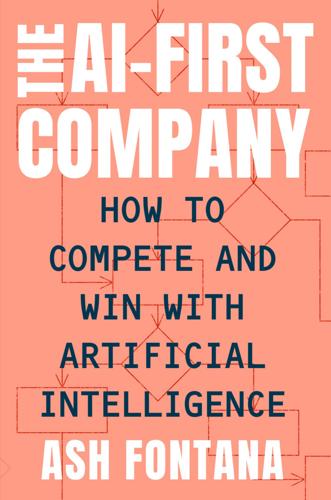
The AI-First Company
by
Ash Fontana
Published 4 May 2021
The manual personalization process may involve taking an observation, using it to inform the next price in an experiment, running the next experiment, making more observations, and so on. The automated personalization process may entail using ML by feeding data into a system that generates a price to test based on the gradient of the curve it thinks will arrive at the optimal price. Airlines developed some of the first price optimization systems, commonly known as yield management systems, that priced each seat based on variables such as: the number of seats on the plane, the cost of flying that plane on the given route, the seat position, the expected demand given the time of year, and so on. These systems rely on the mathematical concept of linear optimization, the basis of some ML systems.
…
Within those disciplines, look for people with skills that enable them to explore datasets in many of the ways explained in Chapter 2, “Lean AI.” These include the following. Statistics. Measurement, process control, instrumentation, and modeling. Manipulation. Modeling, clustering, regression, simulation, and visualization. Operations. Optimization, yield management, manufacturing engineering, systems, dynamics, forecasting, and decision-making. Learning. Signal processing, control engineering, statistical mechanics, systems, and many more. HOW TO SUPPORT THEM Ultimately, motivated people—data scientists or software engineers—want to work on meaningful problems.
…
A/B test, 271 accessibility of data, 72, 107 accuracy, 175, 203–4 in proof of concept phase, 59–60 active learning-based systems, 94–95 acyclic, 150, 271 advertising, 227, 240 agent-based models (ABMs), 103–5, 271 simulations versus, 105 aggregated data, 81, 83 aggregating advantages, 222–65 branding and, 255–56 data aggregation and, 241–45 on demand side, 225 disruption and, 239–41 first-mover advantage and, 253–55 and integrating incumbents, 244–45 and leveraging the loop against incumbents, 256–61 positioning and, 245–56 ecosystem, 251–53 staging, 249–51 standardization, 247–51 storage, 246–47 pricing and, 236–39 customer data contribution, 237 features, 238–39 transactional, 237, 281 updating, 238 usage-based, 237–38, 281 on supply side, 224–25 talent loop and, 260–61 traditional forms of competitive advantage versus, 224–25 with vertical integration, see vertical integration aggregation theory, 243–44, 271 agreement rate, 216 AI (artificial intelligence), 1–3 coining of term, 5 definitions and analogies regarding, 15–16 investment in, 7 lean, see Lean AI AI-First Century, 3 first half of (1950–2000), 3–9 cost and power of computers and, 8 progression to practice, 5–7 theoretical foundations, 4–5 second half of (2000–2050), 9 AI-First companies, 1, 9, 10, 44 eight-part framework for, 10–13 learning journey of, 44–45 AI-First teams, 127–42 centralized, 138–39 decentralized, 139 management of, 135–38 organization structure of, 138–39 outsourcing, 131 support for, 134–35 when to hire, 130–32 where to find people for, 133 who to hire, 128–30 airlines, 42 Alexa, 8, , 228, 230 algorithms, 23, 58, 200–201 evolutionary, 150–51, 153 alliances of corporate and noncorporate organizations, 251 Amazon, 34, 37, 84, 112, 226 Alexa, 8, 228, 230 Mechanical Turk, 98, 99, 215 analytics, 50–52 anonymized data, 81, 83 Apple, 8, 226 iPhone, 252 application programming interfaces (APIs), 86, 118–22, 159, 172, 236, 271 applications, 171 area underneath the curve (AUC), 206, 272 artificial intelligence, see AI artificial neural network, 5 Atlassian Corporation, 243 augmentation, 172 automation versus, 163 availability of data, 72–73 Babbage, Charles, 2 Bank of England, 104–5 Bayesian networks, 150, 201 Bengio, Yoshua, 7 bias, 177 big-data era, 28 BillGuard, 112 binary classification, 204–6 blockchain, 109–10, 117, 272 Bloomberg, 73, 121 brain, 5, 15, 31–32 shared, 31–33 branding, 256–57 breadth of data, 76 business goal, in proof of concept phase, 60 business software companies, 113 buying data, 119–22 data brokers, 119–22 financial, 120–21 marketing, 120 car insurance, 85 Carnegie, Andrew, 226 cars, 6, 254 causes, 145 census, 118 centrifugal process, 49–50 centripetal process, 50 chess, 6 chief data officer (CDO), 138 chief information officer (CIO), 138 chief technology officer (CTO), 139 Christensen, Clay, 239 cloud computing, 8, 22, 78–79, 87, 242, 248, 257 Cloudflare, 35–36 clustering, 53, 64, 95, 272 Coase, Ronald, 226 compatibility, 251–52 competitions, 117–18 competitive advantages, 16, 20, 22 in DLEs, 24, 33 traditional forms of, 224–25 see also aggregating advantages complementarity, 253 complementary data, 89, 124, 272 compliance concerns, 80 computer chips, 7, 22, 250 computers, 2, 3, 6 cost of, 8–9 power of, 7, 8, 19, 22 computer vision, 90 concave payoffs, 195–98, 272 concept drift, 175–76, 272 confusion matrix, 173–74 consistency, 256–57 consultants, 117–18, 131 consumer apps, 111–13, 272 consumer data, 109–14 apps, 111–13 customer-contributed data versus, 109 sensor networks, 113–14 token-based incentives for, 109–10 consumer reviews, 29, 43 contractual rights, 78–82 clean start advantage and, 78–79 negotiating, 79 structuring, 79–82 contribution margin, 214, 272 convex payoffs, 195–97, 202, 272 convolutional neural networks (CNNs), 151, 153 Conway, John, 104 cost of data labeling, 108 in ML management, 158 in proof of concept phase, 60 cost leadership, 272 DLEs and, 39–41 cost of goods sold (COGS), 217 crawling, 115–16, 281 Credit Karma, 112 credit scores, 36–37 CRM (customer relationship management), 159, 230–31, 255, 260, 272 Salesforce, 159, 212, 243, 248, 258 cryptography, 272 crypto tokens, 109–10, 272 CUDA, 250 customer-generated data, 77–91 consumer data versus, 109 contractual rights and, 78–82 clean start advantage and, 78–79 negotiating, 79 structuring, 79–82 customer data coalitions, 82–84 data integrators and, 86–89 partnerships and, 89–91 pricing and, 237 workflow applications for, 84–86 customers costs to serve, 242 direct relationship with, 242 needs of, 49–50 customer support agents, 232, 272 customer support tickets, 260, 272 cybernetics, 4, 273 Dark Sky, 112, 113 DARPA (Defense Advanced Research Projects Agency), 5 dashboards, 171 data, 1, 8, 69, 273 aggregation of, 241–45 big-data era, 28 complementary, 89 harvesting from multiple sources, 57 incomplete, 178 information versus, 22–23 missing sources of, 177 in proof of concept phase, 60 quality of, 177–78 scale effects with, 22 sensitive, 57 starting small with, 56–58 vertical integration and, 231–32 data acquisition, 69–126, 134 buying data, 119–22 consumer data, 109–14 apps, 111–13 customer-contributed data versus, 109 sensor networks, 113–14 token-based incentives for, 109–10 customer-generated data, see customer-generated data human-generated data, see human-generated data machine-generated data, 102–8 agent-based models, 103–5 simulation, 103–4 synthetic, 105–8 partnerships for, 89–91 public data, 115–22 buying, see buying data consulting and competitions, 117–18 crawling, 115–16, 281 governments, 118–19 media, 118 valuation of, 71–77 accessibility, 72, 107 availability, 72–73 breadth, 76 cost, 73 determination, 74–76 dimensionality, 75 discrimination, 72–74 fungibility, 74 perishability and relevance, 74–75, 201 self-reinforcement, 76 time, 73–74 veracity, 75 volume of, 76–77 data analysts, 128–30, 132, 133, 137, 273 data as a service (DaaS), 116, 120 databases, 258 data brokers, 119–22 financial, 120–21 marketing, 120 data cleaning, 162–63 data distribution drift, 178 data drift, 176, 273 data-driven media, 118 data engineering, 52 data engineers, 128–30, 132, 133, 137, 161, 273 data exhaust, 80, 257–58, 273 data infrastructure engineers, 129–32, 137, 273 data integration and integrators, 86–90, 276 data labeling, 57, 58, 92–100, 273 best practices for, 98 human-in-the-loop (HIL) systems, 100–101, 276 management of, 98–99 measurement in, 99–100 missing labels, 178 outsourcing of, 101–2 profitability metrics and, 215–16 tools for, 93–97 data lake, 57, 163 data learning effects (DLEs), 15–47, 48, 69, 222, 273 competitive advantages of, 24, 33 data network effects, 19, 26–33, 44, 273 edges of, 24 entry-level, 26–29, 31–33, 36–37, 274 network effects versus, 24–25 next-level, 26–27, 29–33, 36–37, 278 what type to build, 33 economies of scale in, 34 formula for, 17–20 information accumulation and, 21 learning effects and, 20–21 limitations of, 21, 42–43 loops around, see loops network effects and, 24–26 powers of, 34–42 compounding, 36–38 cost leadership, 39–41 flywheels, 37–38 price optimization, 41–42 product utility, 35–36 winner-take-all dynamics, 34–35 product value and, 39 scale effects and, 21–23 variety and, 34–35 data learning loops, see loops data lock-in, 247–48 data networks, 109–10, 143–44, 273 normal networks versus, 26 underneath products, 25–26 data pipelines, 181, 216 breaks in, 87, 181 data platform, 57 data processing capabilities (computing power), 7, 8, 19, 22 data product managers, 129–32, 274 data rights, 78–82, 246 data science, 52–56 decoupling software engineering from, 133 data scientists, 54–56, 117, 128–30, 132–39, 161, 274 data stewards, 58, 274 data storage, 57, 81, 246–47, 257 data validators, 161 data valuation, 71–77 accessibility in, 72, 107 availability in, 72–73 breadth in, 76 cost in, 73 determination in, 74–76 dimensionality in, 75 discrimination in, 72–74 fungibility in, 74 perishability and relevance in, 74–75, 201 self-reinforcement in, 76 time in, 73–74 veracity in, 75 decision networks, 150, 153 decision trees, 149–50, 153 deduction and induction, 49–50 deep learning, 7, 147–48, 274 defensibility, 200, 274 defensible assets, 25 Dell, Michael, 226 Dell Technologies, 226 demand, 225 denial-of-service (DoS) attacks, 36 designers, 129 differential privacy, 117, 274 dimensionality reduction, 53, 274 disruption, 239–41 disruption theory, 239, 274 distributed systems, 8, 9 distribution costs, 243 DLEs, see data learning effects DoS (denial-of-service) attacks, 36 drift, 175–77, 203, 274 concept, 175–76 data, 176 minimizing, 201 e-commerce, 29, 31, 34, 37, 41, 84 economies of scale, 19, 34 ecosystem, 251–52 edges, 24, 274 enterprise resource planning (ERP), 161, 250, 274 entry-level data network effects, 26–29, 31–33, 36–37, 274 epochs, 173, 275 equity capital, 230 ETL (extract, transform, and load), 58, 275 evolutionary algorithms, 150–51, 153 expected error reduction, 96 expected model change, 96 Expensify, 85–86 Facebook, 25, 43, 112, 119, 122 features, 63–64, 145, 275 finding, 64–65 pricing and, 238–39 federated learning, 117, 275 feedback data, 36, 199–200 feed-forward networks, 151, 153 financial data brokers for, 120–21 stock market, 72, 74, 120–21 first-movers, 253–55, 275 flywheels, 37–38, 243–44 Ford, Henry, 49 fungibility of data, 74 Game of Life, 104 Gaussian mixture model, 275 generative adversarial networks (GANs), 152, 153 give-to-get model, 36 global multiuser models, 275 glossary, 271–82 Google, 111–12, 115, 195, 241, 251, 253–54 governments, 118–19 gradient boosted tree, 53, 275 gradient descent, 208 graph, 275 Gulf War, 6 hedge funds, 227 heuristics, 139, 231, 275 Hinton, Geoffrey, 7 histogram, 53, 275 holdout data, 199 horizontal products, 210–12, 276 HTML (hypertext markup language), 116, 276 human-generated data, 91–102 data labeling in, 57, 58, 92–100, 273 best practices for, 98 human-in-the-loop (HIL) systems, 100–101, 276 management of, 98–99 measurement in, 99–100 missing labels, 178 outsourcing of, 101–2 profitability metrics and, 215–16 tools for, 93–97 human learning, 16–17 hyperparameters, 173, 276 hypertext markup language (HTML), 116, 276 IBM (International Business Machines), 5–8, 255 image recognition, 76–77, 146 optical character, 72, 278 incumbents, 276 integrating, 245–46 leveraging the loop against, 256–61 independent software vendors (ISVs), 161, 248, 276 induction and deduction, 49–50 inductive logic programming (ILP), 149, 153 Informatica, 86 information, 1, 2, 276 data versus, 22–23 informational leverage, 3 Innovator’s Dilemma, The (Christensen), 239 input cost analysis, 215–16 input data, 199 insourcing, 102, 276 integration, 86–90, 276 predictions and, 171 testing, 174 integrations-first versus workflow-first companies, 88–89 intellectual leverage, 3 intellectual property (IP), 25, 251 intelligence, 1, 2, 5, 15, 16 artificial, see AI intelligent applications, 257–60, 276 intelligent systems, 19 interaction frequency, 197 interactive machine learning (IML), 96–97, 276 International Telecommunications Union (ITU), 250–51 Internet, 8, 19, 32, 69, 241–42, 244 inventory management software, 260 investment firms, 232 iPhone, 252 JIRA, 243 Kaggle, 9, 56, 117 Keras, 251 k-means, 276 knowledge economy, 21 Kubernetes, 251 language processing, 77, 94 latency, 158 layers of neurons, 7, 277 Lean AI, 48–68, 277 customer needs and, 49–50 decision tree for, 50–52 determining customer need for AI, 50–60 data and, 56–58 data science and, 54–56 sales and, 58–60 statistics and, 53–54 lean start-up versus, 61–62 levels in, 65–66 milestones for, 61 minimum viable product and, 62–63 model features lean start-ups, 61–62 learning human formula for, 16–17 machine formula for, 17–20 learning effects, 20–22, 277 moving beyond, 20–21 legacy applications, 257, 277 leverage, 3 linear optimization, 42 LinkedIn, 122 loans, 35, 37, 227 lock-in, 247–48 loops, 187–221, 273 drift and, 201 entropy and, 191–92 good versus bad, 191–92 metrics for measuring, see metrics moats versus, 187–88, 192–94 physics of, 190–92 prediction and, 202–3 product payoffs and, 195–98, 202 concave, 195–98 convex, 195–97, 202 picking the product to build, 198 repeatability in, 188–89 scale and, 198–201, 203 and data that doesn’t contribute to output, 199–200 loss, 207–8, 277 loss function, 275, 277 machine-generated data, 102–8 agent-based models, 103–5 simulation, 103–4 synthetic, 105–8 machine learning (ML), 9, 145–47, 277 types of, 147–48 machine learning engineers, 39, 56, 117–18, 129, 130, 132, 138, 139, 161, 277 machine learning management loop, 277 machine learning models (ML models), 9, 26, 27, 31, 52–56, 59, 61, 134 customer predictions and, 80–81 features of, 61, 63 machine learning models, building, 64–65, 143–54 compounding, 148–52 diverse disciplines in, 149–51 convolutional neural networks in, 151, 153 decision networks in, 150, 153 decision trees in, 149–50, 153 defining features, 146–47 evolutionary algorithms in, 150–51, 153 feed-forward networks in, 151, 153 generative adversarial networks in, 152, 153 inductive logic programming in, 149, 153 machine learning in, 151–52 primer for, 145–47 recurrent neural networks in, 151, 153 reinforcement learning in, 152, 153 statistical analysis in, 149, 153 machine learning models, managing, 155–86 acceptance, 157, 162–66 accountability and, 164 and augmentation versus automation, 163 budget and, 164 data cleaning and, 162–63 distribution and, 165 executive education and, 165–66 experiments and, 165 explainability and, 166 feature development and, 163 incentives and, 164 politics and, 163–66 product enhancements and, 165 retraining and, 163 and revenues versus costs, 164 schedule and, 163 technical, 162–63 and time to value, 164 usage tracking and, 166 decentralization versus centralization in, 156 experimentation versus implementation in, 155 implementation, 158–66 data, 158–59 security, 159–60 sensors, 160 services, 161 software, 159 staffing, 161–162 loop in, 156, 166–81 deployment, 171–72 monitoring, see monitoring model performance training, 168–69 redeploying, 181 reproducibility and, 170 rethinking, 181 reworking, 179–80 testing, 172–74 versioning, 169–70, 281 ROI in, 164, 176, 181 testing and observing in, 156 machine learning researchers, 129–34, 135–36, 138, 277 management of AI-First teams, 135–38 of data labeling, 98–99 of machine learning models, see machine learning models, managing manual acceptance, 208–9 manufacturing, 6 marketing, customer data coalitions and, 83 marketing segmentation, 277 McCulloch, Warren, 4–5 McDonald’s, 256 Mechanical Turk, 98, 99, 215 media, 118 medical applications, 90–91, 145, 208 metrics, 203 measurement, 203–9 accuracy, 203–4 area underneath the curve, 206, 272 binary classification, 204–6 loss, 207–8 manual acceptance, 208–9 precision and recall, 206–7 receiver operating characteristic, 205–6, 279 usage, 209 profitability, 209–18 data labeling and, 215–16 data pipes and, 216 input cost analysis, 215–16 research cost analysis, 217–18 unit analysis, 213–14 and vertical versus horizontal products, 210–12 Microsoft, 8, 247 Access, 257 Outlook, 252 military, 6, 7 minimum viable product (MVP), 62–63, 277 MIT (Massachusetts Institute of Technology), 4, 5 ML models, see machine learning models moats, 277 loops versus, 187–88, 192–94 mobile phones, 113 iPhone, 252 monitoring, 277 monitoring model performance, 174–78 accuracy, 175 bias, 177 data quality, 177–78 reworking and, 179–80 stability, 175–77 MuleSoft, 86, 87 negotiating data rights, 79, 80 Netflix, 242, 243 network effects, 15–16, 20, 22, 23, 44, 278 compounding of, 36 data network effects versus, 24–25 edges of, 24 limits to, 42–43 moving beyond, 24–26 products with versus without, 26 scale effects versus, 24 traditional, 27 value of, 27 networks, 7, 15, 17 data networks versus, 26 neural networks, 5, 7, 8, 19, 23, 53, 54, 277–78 neurons, 5, 7, 15 layers of, 7, 276 next-level data network effects, 26–27, 29–33, 36–37, 278 nodes, 21, 23–25, 27, 44, 278 NVIDIA, 250 Obama administration, 118 Onavo, 112 optical character recognition software, 72, 278 Oracle, 247, 248 outsourcing, 216 data labeling, 101–2 team members, 131 overfitting, 82 Pareto optimal solution, 56, 278 partial plots, 53, 278 payoffs, 195–98 concave, 195–98 convex, 195–97, 202 perceptron algorithm, 5 perishability of data, 74–75, 201 personalization, 255–56 personally identifiable information (PII), 81, 278 personnel lock-in, 248 perturbation, 178, 278 physical leverage, 3 Pitts, Walter, 4–5 POC (proof of concept), 59–60, 63, 278 positioning, 245–56 power generators, 209, 278 power teachers, 209 precision, 278 precision and recall, 206–7 prediction usability threshold (PUT), 62–64, 90, 91, 173, 200–202, 279 predictions, 34–35, 48, 63, 65, 148, 202–3 predictive pricing, 41, 42 prices charged by data vendors, 73 pricing of AI-First products, 236–39 customer data contribution and, 237 features and, 238–39 transactional, 237, 280 updating and, 238 usage-based, 237–38, 281 of data integration products, 87 optimization of, 41–42 personalized, 41 predictive, 41, 42 ROI-based, 235–36, 279 Principia Mathematica, 4 prisoner’s dilemma, 104 probability, in data labeling, 107 process automation, 6 process lock-in, 248 products, 59 features of, 61, 63 lock-in and, 248 utility of, 35–36 value of, 39 profit, 213 profitability metrics, 209–18 data labeling and, 215–16 data pipes and, 216 input cost analysis, 215–16 research cost analysis, 217–18 unit analysis, 213–14 and vertical versus horizontal products, 210–12 proof of concept (POC), 59–60, 63, 278 proprietary information, 44, 279 feedback data, 199–200 protocols, 248 public data, 115–22 buying, see buying data consulting and competitions, 117–18 crawling, 115–16, 281 governments, 118–19 media, 118 PUT (prediction usability threshold), 62–64, 90, 91, 173, 200–202, 278 quality, 175, 177–78 query by committee, 96 query languages, 279 random forest, 53, 64, 279 recall, 279 receiver operating characteristic (ROC) curve, 205–6, 279 recurrent neural networks (RNNs), 151, 153 recursion, 150, 279 regression, 64 reinforcement learning (RL), 103, 147–48, 152, 153, 279 relevance of data, 74–75 reliability, 175 reports, 171 research and development (R & D), 42 cost analysis, 217–18 revolutionary products, 252 robots, 6 ROI (return on investment), 55, 63–65, 93, 164, 176, 181, 198, 279 pricing based on, 235–36, 279 Russell, Bertrand, 4 sales, 58–60 Salesforce, 159, 212, 243, 248, 258 SAP (Systems Applications and Products in Data Processing), 6, 159, 161, 247, 248 SAS, 253 scalability, in data labeling, 106 scale, 20–22, 227, 279 economies of, 19, 34 loops and, 198–200, 203 in ML management, 158 moving beyond, 21–23 network effects versus, 24 scatter plot, 53, 280 scheme, 279 search engines, 31 secure multiparty computation, 117, 279 security, 159 Segment, 87–88 self-reinforcing data, 76 selling data, 122 sensors, 113–14, 160, 280 shopping online, 29, 31, 34, 37, 41, 84 simulation, 103–4, 280 ABMs versus, 105 social networks, 16, 20, 44 Facebook, 25, 43, 112, 119, 122 LinkedIn, 122 software, 159 traditional business models for, 233–34 software-as-a-service (SaaS), 87, 280 software development kits (SDKs), 112, 280 software engineering, decoupling data science from, 133 software engineers, 139, 134–37 Sony, 7 speed of data labeling, 108 spreadsheets, 171 Square Capital, 35 stability, 175–77 staging, 249–51 standardization, 247–48, 249–50 statistical analysis, 149, 153 statistical process control (SPC), 156, 173, 280 statistics, 53–54 stocks, 72, 74, 120–21 supervised machine learning, 147–48, 280 supply, 225 supply-chain tracking, 260 support vector machines, 280 synthetic data, 105–8, 216 system of engagement, 280 system of record, 243, 281 systems integrators (SIs), 161, 248, 281 Tableau, 253 talent loop, 260–61, 281 Taylor, Frederick W., 6 teams in proof of concept phase, 60 see also AI-First teams telecommunications industry, 250–51 telephones mobile, 113 iPhone, 253 networks, 23–25 templates, 171 temporal leverage, 3 threshold logic unit (TLU), 5 ticker data, 120–21 token-based incentives, 109–10 tools, 2–3, 93–97 training data, 199 transactional pricing, 237, 280 transaction costs, 243 transfer learning, 147–48 true and false, 204–6 Turing, Alan, 5 23andMe, 112 Twilio, 87 uncertainty sampling, 96 unit analysis, 213–14 United Nations, 250 unsupervised machine learning, 53, 147–48, 281 Upwork, 99 usability, 255–56 usage-based pricing, 237–38, 281 usage metrics, 209 user interface (UI), 89, 159, 281 utility of network effects, 42 of products, 35–36 validation data, 199 value chain, 18–19, 281 value proposition, 59 values, missing, 178 variable importance plots, 53, 281 variance reduction, 96 Veeva Systems, 212 vendors, 73, 161 data, prices charged by, 73 independent software, 161, 248, 276 lock-in and, 247–48 venture capital, 230 veracity of data, 75 versioning, 169–70, 281 vertical integration, 226–37, 239, 244, 252, 281 vertical products, 210–12, 282 VMWare, 248 waterfall charts, 282 Web crawlers, 115–16, 282 weights, 150, 281 workflow applications, 84–86, 253, 259, 282 workflow-first versus integrations-first companies, 88–89 yield management systems, 42 Zapier, 87 Zendesk, 233 zettabyte, 8, 282 Zetta Venture Partners, 8–9 A B C D E F G H I J K L M N O P Q R S T U V W X Y Z ABOUT THE AUTHOR Ash Fontana became one of the most recognized startup investors in the world after launching online investing at AngelList.
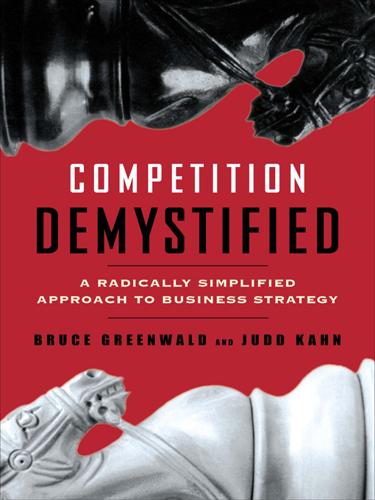
Competition Demystified
by
Bruce C. Greenwald
Published 31 Aug 2016
Territory can be defined by geography, product type, service specialization, or the characteristics of target customers. So long as these segments are not too closely related, the companies are unlikely to be tempted to compete with one another on price.* With each company reigning in its particular niche, the industry will have what is known as effective yield management—in which customers who are willing to pay more for an item will get the opportunity to do so, because their choice resides in a particular niche and they are not tempted to buy a lower-priced alternative in another niche, even if the two purchases look essentially equivalent to someone else.† From a cooperative perspective, price coordination is largely a matter of the effective positioning of firms across industry subsegments.
…
See Marketing Aetna Aggression avoiding costs nature of Airbus Aircraft industry Airline Deregulation Act Airline industry barriers to entry buyouts customer loyalty programs deregulation direct competition avoidance government regulation hub-and-spoke system industry map market segments market share stability price competition in returns technology travel agent relations yield management AMD (Advanced Micro Devices) Intel v. America Japan v. manufacturing productivity American Airlines America Online. See AOL Amoco Anheuser-Busch Coors v. market share stability Miller v. operating margin returns Antitrust violations AOL (America Online) Apple Computer applications competitors growth dilemma history IBM and industry map market share stability Motorola and notebooks operating margins positioning profitability returns synergy vision Aramco Arkwright, Richard Armstrong, Michael Assets valuation Atari AT&T Auction houses Autodesk Automobile industry acquisitions customer captivity differentiation economies of scale globalization’s influence Bargaining.
…
management marketing strategy monopoly benefits operating margins profitability real estate returns, Target v. warehouse club Walton, Bud Walton, Sam Warehouse clubs War games Welch, Jack Wellfleet Windows Macintosh v., Woodruff, Edward World War IIstrategy Xbox Xerox Yahoo! Yield management Zero-sum games *The Justice Department had demanded that AT&T restructure in some way, but the company itself was deeply involved in formulating the strategy by which the Regional Bell Operating Companies were spun off. *Most differentiated products also compete in markets where there are no barriers to entry, so differentiation, as we will illustrate, is not sufficient to protect a firm from the ravages of a highly competitive market.

Culture and Prosperity: The Truth About Markets - Why Some Nations Are Rich but Most Remain Poor
by
John Kay
Published 24 May 2004
In 2001 the pool was scrapped and replaced by arrangements much more similar to those of the world oil market. 21 Incentive compatibility is a key objective of a market economy and a specific objective of the electricity pool. But only perfectly competitive markets achieve full incentive compatibility. Once sellers or buyers are sufficiently large for their behavior to influence the price, they begin to behave strategically. Yield Management ••••••••••••••••••••••••••••••••••••• In perfectly competitive markets, the price that equates supply and demand emerges through spontaneous order as at San Remo. In markets that are less than perfectly competitive, a seller decides what price to charge. Balancing supply and demand becomes a business objective, rather than the outcome of a decentralized process.
…
But demand varies widely. Empty seats on planes are as useless and as unprofitable as flowers left wilting when the San Remo { 152} John Kay market is closed. But San Remo is a competitive market, in which no one fixes the price. Airlines face only a few competitors. They have sophisticated computer packages-yield management systemsdesigned to enable them to monitor the balance between supply and demand. These systems are fed basic information-when Easter falls, the date of the Super Bowl, what happened last year. The objective is not to fill the plane, but to maximize revenue from the flight. An airline would rather have some empty seats than a planeful of passengers all on discounted tickets.
…
When a plane is about to depart with an empty seat, it would be a Pareto improvement if the seat was filled by a passenger willing to pay anything at all. But the airline won't do this, because if seats were regularly available for next to nothing whenever one was empty, this would affect the behavior of full-fare-paying passengers. Airlines have the sophisticated yield management systems of chapter 12 to handle precisely this problem. Their aim is not to fill the plane, but to strike a balance between filling seats and obtaining good prices for seats. If they could read minds and gauge exactly how much each passenger would be willing to pay, they could engage in perfect price discrimination 7 and achieve Pareto efficiency.

Loonshots: How to Nurture the Crazy Ideas That Win Wars, Cure Diseases, and Transform Industries
by
Safi Bahcall
Published 19 Mar 2019
Crandall set up a division to use that data to extract maximum dollars per seat. The technique, as expected, was given a very boring name: yield management. The frequent flier program that American invented around this time, which built customer loyalty, and the SuperSaver program, which filled empty seats with last-minute bookings, were much more visible. Other airlines quickly copied those ideas. But the behind-the-scenes, unglamorous, locked-in distribution channel from Sabre and the yield-management techniques from Big Data were almost impossible to copy, for many years. Those changes saved American. Few people go wild for a reservations system.
…
“academic eggheads”: Petzinger, 102 (“Crandall does not recall the comment but does not deny making it”). “kerosene in his blood”: Rubin. The pie industry: AA innovations: Cohen; Petzinger; Reed; Rubin. Quotations: “legalized warfare”: Rubin. “cannibalistic”: Zellner. “Tuesday as opposed to Friday” and “yield management”: Petzinger, 304. JT and Lindy: C. A. Lindbergh (CAL) flight and mania: Berg, 112–32, 135–63; CAL, AoV, 70–83; Jackson, 271–77, 305–25; Van Vleck, 42–44. Prior attempts: Connor; Jackson, 369–70. CAL, Trippe, Latin America: Bender, 100–101; Berg, 172–75, 191; CAL, AoV, 83–96; Van Vleck, 56–64; Daley, 60–68, 484.
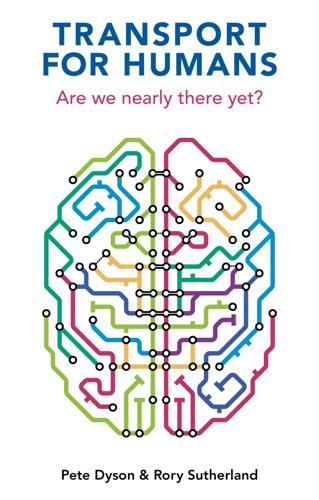
Transport for Humans: Are We Nearly There Yet?
by
Pete Dyson
and
Rory Sutherland
Published 15 Jan 2021
By the year 2000, it wasn’t just possible to plot and price a journey in advance, you could also research your destination too. Satnav opened up new routes: London’s residential streets saw a 72% increase in traffic between 2009 and 2019,18 entirely on smaller B-roads, despite car ownership in London remaining stable. Travel has become much easier. Second, online booking made ‘yield-management pricing’ possible: that is, where prices vary in line with demand. Suddenly, ideas that once seemed outlandish (flying to Budapest for the weekend, say) could not be rejected on the grounds of price. In the UK, having fuel duty on petrol frozen at 57.95 pence per litre between 2009 and 2020 (instead of letting it rise with inflation) meant that each mile driven became gradually less expensive compared with other options.
…
To minimize the chance of actually missing the train, and the perceived stress caused by even considering that this might happen, most people arrive early. When the stakes are high, we are loss averse. High-speed rail across the world mimics air travel by using pre-booked tickets and advance fares to handle yield management. We save money by buying a ticket that is valid on only one train, meaning we need ‘buffer time’ to get to the station, and most of the time this means we are left to hang around when we get there. To be cost effective, HS2 must run at least three trains per hour from London to Birmingham and Manchester, and the same in the other direction.

Virtual Competition
by
Ariel Ezrachi
and
Maurice E. Stucke
Published 30 Nov 2016
Department of Justice, Horizontal Merger Guidelines, para. 3. 284 Notes to Pages 87–90 7. Ibid. 8. Barry C. Smith, John F. Leimkuhler, and Ross M. Darrow, “Yield Management at American Airlines,” Interfaces 22, no. 1 (1992): 8–31; Paul Davies, “Airline Ties Profitability Yield to Management,” SIAM News 27, no. 5 (1994), cited in R. Preston McAfee and Vera te Velde “Dynamic Pricing in the Airline Industry”: “This number may be inflated for several reasons. First, it includes sales of yield management strategy to others, as opposed to American’s own use of the techniques, although the value of American’s internal use is put at just slightly less.
…
As competition authorities recognize, “Arbitrage on a modest scale may be possible but sufficiently costly or limited that it would not deter or defeat a discriminatory pricing strategy.”7 Dynamic Pricing Price discrimination differs from dynamic pricing, where prices change in response to changes in supply and demand. The airline industry was one of the first to profit from dynamic pricing. Early estimates from the 1990’s suggested that American Airlines, which many consider to have pioneered dynamic pricing, made, at the time, an extra $500 million per year through its yield management.8 Today, dynamic pricing is pervasive in the airline industry, with frequent changes to pricing and availability of seat class—all aimed at maximizing profitability—by estimating customers’ flexibility, outside options, and reservation price. Similar practices are common in many other industries, from hotels to sporting events.

Peak Car: The Future of Travel
by
David Metz
Published 21 Jan 2014
The main idea for achieving this is ‘road pricing’, also known as ‘congestion charging’ and implemented in central London. By charging for use of road space, particularly when congested with traffic, some people decide not to travel, or to travel at others times, leaving more room for those who travel needs are more pressing. Air travel already uses something like demand management to set fares—known as ‘yield management’, the now familiar flexible pricing introduced by the budget airlines and adopted generally for short‑haul flights. This allows the airlines to offer bargain prices on less popular flights and to those who can book early, and to make an acceptable overall return by charging more for popular routes, busy times and late bookers.

The Silent Intelligence: The Internet of Things
by
Daniel Kellmereit
and
Daniel Obodovski
Published 19 Sep 2013
As we showed in chapter 3, humans and machines work best in tandem when humans capitalize on their own creativity and intuition while machines handle data gathering, analytics, and algorithms. Already today, many systems run highly optimized with little or no human intervention, such as manufacturing, logistics planning, yield management, certain medical research, autonomous driving, and flying. Many more industry sectors will rely on machines in the future, which will take over most of the operational functions better and more precisely than humans. The Singularity University is a nonprofit learning institution in Silicon Valley that is trying to foster knowledge and thinking in this field.
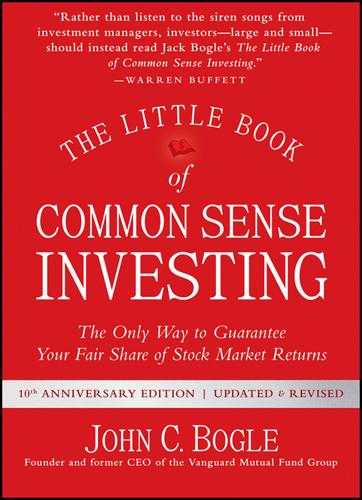
The Little Book of Common Sense Investing: The Only Way to Guarantee Your Fair Share of Stock Market Returns
by
John C. Bogle
Published 1 Jan 2007
While these costs make the task of improving returns far more difficult, overly confident bond fund managers may be tempted to take just a little extra risk by extending maturities of the bonds in the portfolio. (Long-dated bonds—with, say, 30-year maturities—are much more volatile than short-term bonds—say, two years—but usually provide higher yields.) Managers also may be tempted to increase returns by reducing the investment quality of the portfolio, holding less in U.S. Treasury bonds (rated AA+) or in investment-grade corporate bonds (rated BBB or better), and holding more in below-investment-grade bonds (BB or lower), or even some so-called junk bonds, rated below CC or even unrated.

Getting a Job in Hedge Funds: An Inside Look at How Funds Hire
by
Adam Zoia
and
Aaron Finkel
Published 8 Feb 2008
As the underlying stock rises, the value of the convertible bond should also rise. Investors are protected on the downside, because even if the stock falls, the bond will simply fall to the level where it is in essence a straight bond. c01.indd 9 1/10/08 11:00:57 AM 10 Getting a Job in Hedge Funds High-Yield High-yield managers invest in noninvestment-grade debt of companies that show significant upside potential. Objectives may range from high current income to acquisition of undervalued instruments. Managers focus on assessing the credit risk of the issuer. Some of the available high-yield instruments include extendable/reset securities, increasing-rate notes, pay-in-kind securities, step-up coupon securities, and splitcoupon securities.

How to Avoid a Climate Disaster: The Solutions We Have and the Breakthroughs We Need
by
Bill Gates
Published 16 Feb 2021
You may be wondering how much all this would cost. There’s no way to put a price tag on everything the world needs to do to adapt to climate change. But the commission I’m involved with priced out spending in five key areas (creating early-warning systems, building climate-resilient infrastructure, raising crop yields, managing water, and protecting mangroves) and found that investing $1.8 trillion between 2020 and 2030 would return more than $7 trillion in benefits. To put that in perspective, spread out over a decade, it’s about 0.2 percent of the world’s GDP, with a nearly fourfold return on investment. You can measure those benefits in terms of bad things that don’t happen: civil wars that don’t break out over water rights, farmers who don’t get wiped out by a drought or flood, cities that don’t get destroyed by hurricanes, waves of people who don’t become climate refugees.
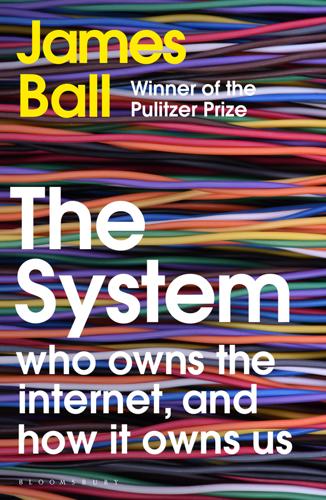
The System: Who Owns the Internet, and How It Owns Us
by
James Ball
Published 19 Aug 2020
This made the task for publishers all but impossible: how could you work out which ad network would actually make you more money, given they all defined views differently and the supposed headline figure of CPM was useless? O’Kelley’s idea was to try to build a quick dashboard tool to help publishers track which ad network would actually make them more money, once you factored in all of their requirements. ‘I built a yield management widget, basically, that would try to figure out which ad network to allocate to, based on which would make the most money. But it didn’t work, because the ad networks were too dumb.’ In other words, the ad networks weren’t sure what yield they could expect to get off a particular advert either, as they weren’t very good at tracking their own revenue.

Television disrupted: the transition from network to networked TV
by
Shelly Palmer
Published 14 Apr 2006
Or, commercials can be created that include different offers at different times of the day, or even if the stock market is up or down. Dynamic advertising offers video broadcasters a near live, reactive tool to communicate with consumers. Copyright © 2006, Shelly Palmer. All rights reserved. 11-Television.Chap Eleven v3.qxd 3/20/06 7:27 AM Page 155 Addressable Dynamic Ads 155 Addressable Dynamic Ads Aside from yield managing manufacturing or retail capacity in real time, dynamic ads can also be used to customize content based upon viewer location, behaviors or preferences. When all of these attributes are combined, the system is said to have addressability. Many people confuse addressability and dynamicism, but they are different functions.
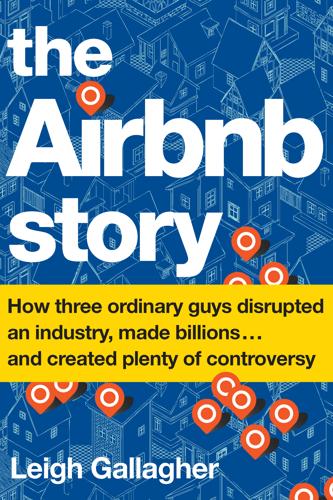
The Airbnb Story: How Three Ordinary Guys Disrupted an Industry, Made Billions...and Created Plenty of Controversy
by
Leigh Gallagher
Published 14 Feb 2017
Guesty, a professional management service for hosts, started by Israeli twin brothers, is one of the largest: hosts give Guesty access to their Airbnb accounts, and it handles booking management, all guest communication, calendar updating, and scheduling and coordinating with cleaners and other local service providers, for a fee of 3 percent of the booking charge. San Francisco–based Pillow creates a listing, hires cleaners, handles keys, and employs an algorithm to determine best pricing options. HonorTab brings a minifridge concept to Airbnb. Everbooked was founded by a self-described yield-management geek with expertise in data science who saw the need for dynamic pricing tools for Airbnb hosts. One of the biggest chores that hosts often need help with, for example, is turning over keys to guests. It can be hard to always arrange to be home when the guest arrives, especially if the host has a full-time job, or is out of town, or when travelers’ flights are delayed.

Frugal Innovation: How to Do Better With Less
by
Jaideep Prabhu Navi Radjou
Published 15 Feb 2015
A frugal services revolution GAPPAA.ORG Companies are finding new, highly effective and affordable ways to deliver services or services bundled with products. Such business models include: software as a service (SaaS) in computing; power by the hour in aircraft engines; massive open online courses (MOOCs) in education; hub-and-spoke and yield management models in airlines; online retailing; and cloud computing. By flexing their assets, airlines such as Southwest Airlines, easyJet and Ryanair have created a new, low-cost market segment for flyers within the US and Europe, and have succeeded in challenging long-haul incumbents. First, the low-cost carriers rebased the existing airline business model by maximising the time that their most valuable assets – their aircraft – spend in the air, and reducing the time they spend on the ground.

Istanbul Travel Guide
by
Lonely Planet
Rates & Reservations Hotels here are busy, so you should book your room as far in advance as possible, particularly if you are visiting during the high season (Easter to May, September to October and Christmas/New Year). Recent years have seen significant fluctuations in tourist numbers in İstanbul, so most hotels now use yield management systems when setting their rates. This means that in quiet times prices can drop dramatically (sometimes by as much as 50%) and in busy times they can skyrocket. As a result, you should treat our prices as a guide only – it is possible that the price you are quoted will be quite different. Note that most hotels in İstanbul set their prices in euros, and we have listed them as such here.
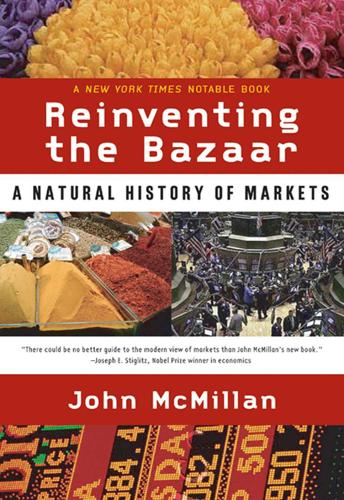
Reinventing the Bazaar: A Natural History of Markets
by
John McMillan
Published 1 Jan 2002
Without the instant two-way communication the internet provides, it would be hard to implement this pricing flexibility. The rapid flow of information about consumers’ tastes that comes from online ticket sales works in the other direction as well, allowing sellers to set higher-than-normal prices for flights and games that turn out to be especially popular. Techniques known as “yield management” separate price-sensitive customers from price-insensitive customers, allowing the seller to charge a higher price to the latter. Customer-tailored pricing is not new: before the internet, airlines charged lower ticket prices to those who booked a week in advance or were willing to stay over Saturday night, and higher prices to those who wanted the flexibility of last-minute purchases.

Skygods: The Fall of Pan Am
by
Robert Gandt
Published 1 Mar 1995
Delta was one of the first airlines to construct a hub-and-spoke system, concentrating its activity at “hubs” like Atlanta, Dallas, Cincinnati, and Salt Lake City, with feeder routes—“spokes”—radiating outward to its hundreds of satellite destinations. The “Big Three”—American, United, and Delta—had all prospered under deregulation, developing hub-and-spoke networks, frequent-flier programs, computer reservations systems, and sophisticated yield management strategies that enabled them to overwhelm their regional competitors. While American and United, both flush with cash, spent over a billion dollars buying up the routes of Pan Am, TWA, Continental, and Eastern, Delta had held back. “We sit around quietly doing our thing,” Delta’s president, Whit Hawkins, liked to say, “while the rest of them go around killing each other.”
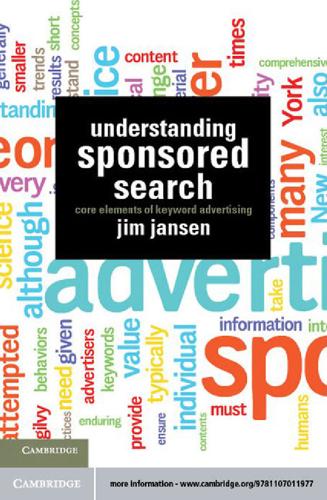
Understanding Sponsored Search: Core Elements of Keyword Advertising
by
Jim Jansen
Published 25 Jul 2011
Year over year (YOY): the means of comparing data from one year to the next. For example, to compare online holiday retail revenue from last year to this year (see Chapter 6 BAM!). Yield: the percentage of clicks versus impressions on an ad within a specific page. Also called ad click rate (Source: IAB) (see Chapter 6 BAM!). Yield management: yield and revenue management is the process of understanding, anticipating, and influencing advertiser and consumer behavior to maximize profits through better selling, pricing, packaging, and inventory management while delivering value to advertisers and site users (Source: IAB) (see Chapter 6 BAM!).

Commuter City: How the Railways Shaped London
by
David Wragg
Published 14 Apr 2010
Traditionally and in most countries, railway fares were set by the mile, although on some urban railways, so-called ‘scheme’ or zonal fares would group several stations together for the same fare. This was first applied in the British Isles on the Bakerloo Line in 1911. British Rail, as it had become, decided to try to manage its traffic better by increasing peak period fares and reducing off-peak fares, a system sometimes referred to as yield management and practised by low-fare airlines. Of course, a railway is not an airline and the system did not ensure even loadings throughout the day or throughout the week. In the late 1960s, it was also decided to impose higher fare increases on lines with more modern rolling stock or a better service, with one of the lines treated in this way being that between London and Brighton.

Machine, Platform, Crowd: Harnessing Our Digital Future
by
Andrew McAfee
and
Erik Brynjolfsson
Published 26 Jun 2017
The tools and techniques of revenue management, which have been refined by decades of research and real-world stress testing, can help greatly with this task but typically need lots of data to run well. They also benefit from being applied across lots of supply and lots of demand. In other words, they work better and better across bigger and bigger networks, and network effects are one of the defining characteristics of platforms. So, an exercise studio gains access to powerful yield management algorithms that let it maximize total revenue for each class. Airbnb hosts get pricing assistance so that their lodging is rented for the revenue-maximizing price during both busy and quiet periods. Uber drivers get “heat maps” showing them where to position themselves to maximize their chances of quickly getting a fare.

Googled: The End of the World as We Know It
by
Ken Auletta
Published 1 Jan 2009
Throughout, he dabbled in computer software, creating the first application to measure the audience that ads attracted, and building software to manage ad inventory. “I wrote my first full-blown software system in 1973,” he said. In 1979, he built “the first Monster system—eventually two million lines of code,” he said, which became the standard yield management software that determined prices, modeled the national marketplace, and allocated ads. His last job at Benton & Bowles was CEO of MediaVest, their media buying and planning agency. In 1999, Sir Martin Sorrell, the CEO of the WPP Group, who was knighted in 2000, recruited him to become global chairman and CEO of Mindshare, a MediaVest competitor.

Fire and Steam: A New History of the Railways in Britain
by
Christian Wolmar
Published 1 Mar 2009
InterCity was blessed too with a series of brilliant advertising campaigns devised by the Tories’ agency, Saatchi & Saatchi, notably the famous Jimmy Saville series ‘We’re getting there’. The HST saved the concept of express train travel and enabled the railways to remain competitive with the car on the now completed motorway network. InterCity was a people’s train service, with no supplement for its use, and it was so successful that yield management techniques to maximize revenue (through charging higher fares at times of peak demand), now familiar in the aviation industry, had to be developed by British Railways to choke off-peak-time demand (through cheap fares aimed at leisure customers travelling off-peak and high fares at times of the day when business people wanted to travel).

Unacceptable: Privilege, Deceit & the Making of the College Admissions Scandal
by
Melissa Korn
and
Jennifer Levitz
Published 20 Jul 2020
IN LATE SEPTEMBER 2019, more than 6,600 college counselors, admissions officers, and people in the enrollment management consulting business descended on Louisville, Kentucky, for the annual conference of the National Association for College Admission Counseling. The three-block radius around the Kentucky International Convention Center was buzzing with talk of yield management and recruiting tactics, recommendation letters, and application-fee waivers. School-branded stress balls, pens, and notebooks abounded. Collegewise, a college counseling firm, passed out what was by far the best swag: buttons that read “I said no to Aunt Becky,” a snarky nod to Lori Loughlin’s Full House character.

Class Acts: Service and Inequality in Luxury Hotels
by
Rachel Sherman
Published 18 Dec 2006
Workers tried to sell rooms at high official, or “rack,” rates (rather than cheaper corporate rates) or sell them in the more expensive categories.12 It was much more satisfying to sell an $800 suite than to sell a basic room at a corporate rate for $225, which hardly felt like an achievement. Sally, a former reservationist at the Luxury Garden, told me that yield management (maximizing revenue through rate manipulation) was “like gambling” and that she liked to do it when she was bored. Front desk workers also used “upselling” when guests checked in and seemed to need more space; they received a small commission for convincing the guest to take (and pay for) a larger room.
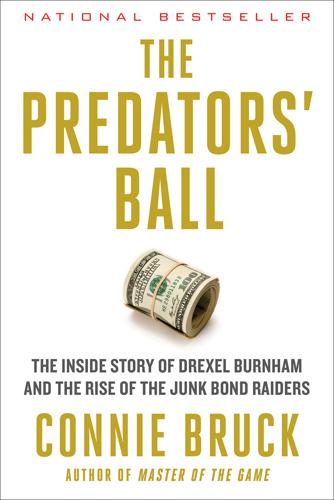
The Predators' Ball: The Inside Story of Drexel Burnham and the Rise of the JunkBond Raiders
by
Connie Bruck
Published 1 Jun 1989
But however much animus existed between group members and Lowell, no one could come between the two brothers. Michael Milken’s power did not go to his head in a way that impaired him as a salesman. Not long after he arrived in L.A. he called James Caywood, who had just arrived in Houston to run a high-yield-bond fund named American General Capital Management. “Mike said, ‘I hear you’re the new high-yield manager,’ ” Caywood recalled. “ ‘I’m Mike Milken. Why don’t you get on a plane, come out here, we’ll spend some time and talk about the high-yield market?’ “I said, ‘Mike, I’ve been in this business ten years as a salesman. I know it’s customary for the salesman to come to see the customer.’ “He said, ‘You know, you’re right.’

The Fissured Workplace
by
David Weil
Published 17 Feb 2014
As part of this discussion, AAHOA stated that it will be identifying particular action items that it would like the franchise companies to implement, and AAHOA will also be interested in learning about other points that the franchise companies are already considering and implementing on an “as needed” basis, including: • granting the franchisees 6–12 month extensions on their construction and/or renovation projects; • postponing or suspending the introduction of any new amenities, programs, or systems until after the financial markets have stabilized and the industry is once again profitable; • increasing the franchise companies’ marketing efforts, both on a system-wide basis and at the local levels; • decreasing the royalty fees for any franchisees who are encountering severe financial hardships; … • protecting the existing franchisees by limiting the number of applications you approve for conversions or new hotels in their geographic areas, especially if there has been a downturn in reservations and occupancy rates in these areas; • assigning key personnel to meet with each franchisee to discuss individual issues concerning their respective hotels, including potential inexpensive marketing opportunities, yield management, decreasing expenses, and operating the facilities in a more efficient and cost-productive manner; and • in the event of an early termination (regardless of whether it is voluntary or involuntary), limiting the liquidated damages to no more than 6 months of royalty fees based on the amount of royalty fees the franchisee has paid in the immediately preceding 6 months.

On the Wrong Line: How Ideology and Incompetence Wrecked Britain's Railways
by
Christian Wolmar
Published 29 May 2005
Freight, too, was supposed to be profitable, a much harder target. From an annual loss of £100m in 1984, InterCity broke even a couple of years later and then became highly profitable in the boom years of the late 1980s. This was achieved by more intensive use of rolling stock, good marketing and better yield management - raising fares in markets that could bear it. Indeed, for the first time, fare rises were used deliberately by BR, under government instruction, to maximise revenue and bring down the deficit. Virtually every year from Mrs Thatcher’s election to the mid-1990s, fares went up by more than the rate of inflation, which made sense in the narrow terms of cutting BR’s losses but was nonsensical in environmental terms.

Ghost Train to the Eastern Star: On the Tracks of the Great Railway Bazaar
by
Paul Theroux
Published 9 Sep 2008
The employees in this room didn’t need American accents or names; they were providing backup, emergency service and tech support. The room was a racket of undifferentiated voices, like a cage of macaws. ‘Airlines are some of our best customers. For them to get the maximum benefit from a flight, they need advice on space control and yield management.’ From ticketing to pricing to seating logistics (which is what I took ‘space control’ to mean), all this was managed by these techies in Vikhroli, who worked every day and every night of the year. ‘It’s stressful work,’ Mr Randeria said. Because of that, TCS provided a gym, a cafeteria and a resident doctor.

The Silk Roads: A New History of the World
by
Peter Frankopan
Published 26 Aug 2015
Naturally, they blossomed further still following the opening up of trade from India and the Americas.36 These cities became magnets for merchants from far and wide, which in turn made for vibrant social and economic life and for strong civic identities. The growing populations required surrounding land to be used efficiently, prompting rapid advances not only in yield management of crops in the surrounding territory but also in irrigation techniques, such as the construction of dykes and sea walls to allow every piece of available land to be used profitably. The burgeoning size and productivity of the cities of the Low Countries and their hinterlands made them lucrative honey pots – centres which generated tax revenues, something not lost on the Spanish rulers who by luck of dynastic marriage and inheritance controlled most of this region.37 It was not long before individual provinces and cities were howling in dismay at the introduction of punitively high levels of taxation, coupled with brutally heavy-handed attitudes on matters of faith.

The Rise and Fall of American Growth: The U.S. Standard of Living Since the Civil War (The Princeton Economic History of the Western World)
by
Robert J. Gordon
Published 12 Jan 2016
Instead, there was an increase in the variance of fares, as airlines could now vary the price of a given seat in order to maximize revenue, charging lower fares to personal travelers able to book weeks or months in advance and higher fares to business travelers who often booked within a day or two before the flight. Increasingly complex systems of managing airline fares (called “yield management”) devised other methods of charging higher prices to business travelers, including restrictions that required those buying the lowest fares to stay over a Saturday night at the trip’s destination. However, the meaning of the price itself changed on Monday, May 1, 1981, when American Airlines stunned the industry by introducing the first frequent flyer benefit plan, dubbed “AAdvantage.”

Lonely Planet Turkey (Travel Guide)
by
Lonely Planet
,
James Bainbridge
,
Brett Atkinson
,
Steve Fallon
,
Jessica Lee
,
Virginia Maxwell
,
Hugh McNaughtan
and
John Noble
Published 31 Jan 2017
ACCOMMODATION Hotels here are busy, so you should book your room as far in advance as possible, particularly if you are visiting during the high season (Easter–May, September–October and Christmas/New Year). Recent years have seen significant fluctuations in tourist numbers in İstanbul, so most hotels now use yield management systems when setting their rates. This means that in quiet times prices can drop dramatically (sometimes by as much as 50%) and in busy times they can skyrocket. As a result, you should treat our prices as a guide only – it is possible that the price you are quoted will be quite different. Note that most hotels in İstanbul set their prices in euros, and we have listed them as such here.

Lonely Planet Turkey
by
Lonely Planet
RATES & RESERVATIONS Hotels here are usually busy, so you should book your room as far in advance as possible, particularly if you are visiting during the high season (Easter to May, September to October and Christmas/New Year). Recent years have seen significant fluctuations in tourist numbers in İstanbul, so most hotels now use yield management systems when setting their rates. This means that in quiet times prices can drop dramatically (sometimes by as much as 50%) and in busy times they can skyrocket. As a result, you should treat our prices as a guide only – it is possible that the price you are quoted will be quite different. Note that most hotels in İstanbul set their prices in euros, and we have listed them as such here. 4Kadıköy Hush Hostel ModaHOSTEL$ (map Google map; %0216-330 1122; www.hushhostels.com; Güneșlibahçe Sokak 50b; dm from €13, s without bathroom €22, d €36-44; naiW; fKadıköy, mKadıköy) Located in the thick of Kadıköy’s entertainment district, this is a party hostel – expect plenty of noise.